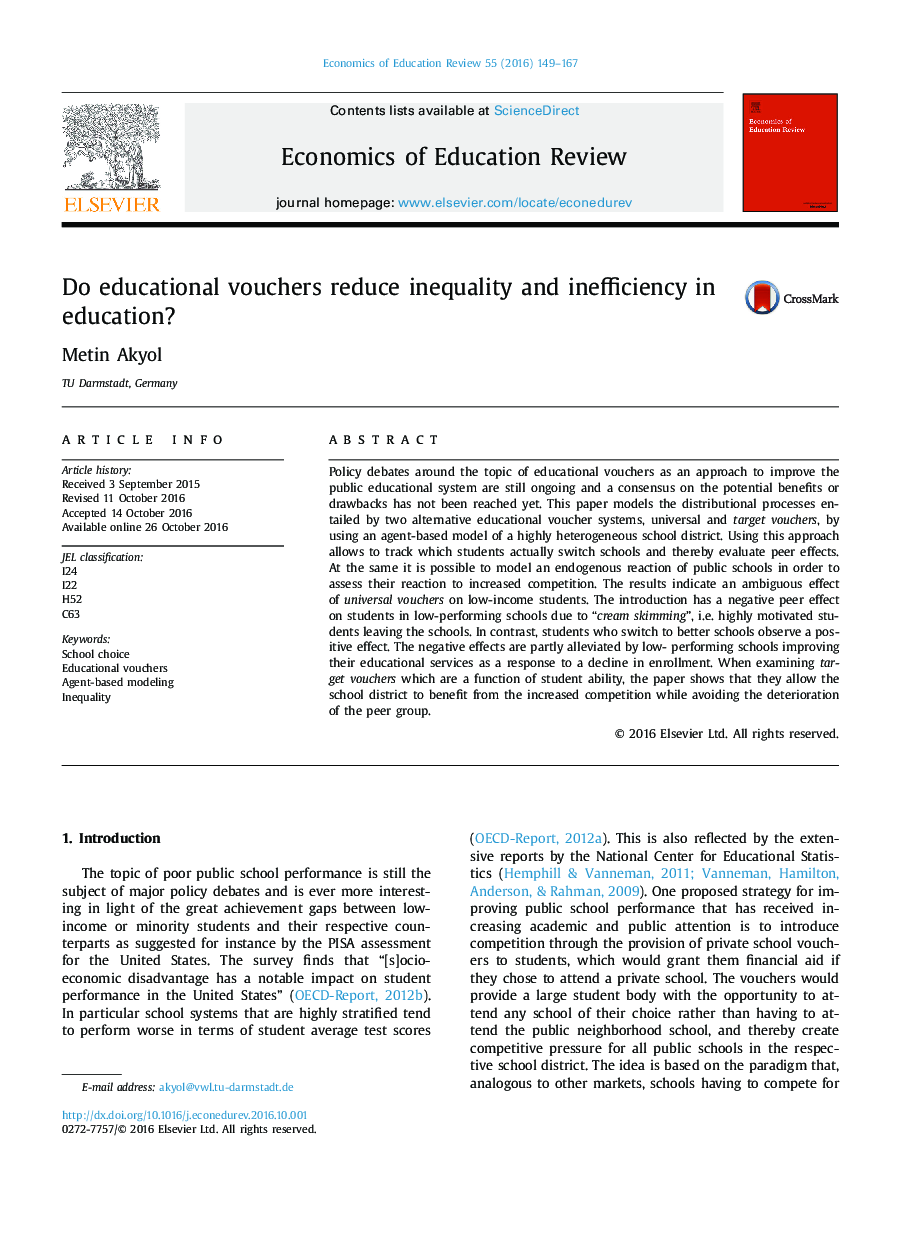| Article ID | Journal | Published Year | Pages | File Type |
|---|---|---|---|---|
| 4938288 | Economics of Education Review | 2016 | 19 Pages |
Abstract
Policy debates around the topic of educational vouchers as an approach to improve the public educational system are still ongoing and a consensus on the potential benefits or drawbacks has not been reached yet. This paper models the distributional processes entailed by two alternative educational voucher systems, universal and target vouchers, by using an agent-based model of a highly heterogeneous school district. Using this approach allows to track which students actually switch schools and thereby evaluate peer effects. At the same it is possible to model an endogenous reaction of public schools in order to assess their reaction to increased competition. The results indicate an ambiguous effect of universal vouchers on low-income students. The introduction has a negative peer effect on students in low-performing schools due to “cream skimming”, i.e. highly motivated students leaving the schools. In contrast, students who switch to better schools observe a positive effect. The negative effects are partly alleviated by low- performing schools improving their educational services as a response to a decline in enrollment. When examining target vouchers
which are a function of student ability, the paper shows that they allow the school district to benefit from the increased competition while avoiding the deterioration of the peer group.
Related Topics
Social Sciences and Humanities
Economics, Econometrics and Finance
Economics and Econometrics
Authors
Metin Akyol,
